Short-eared Owl
Scientific Name: Asio flammeusMaltese Name: Kokka tax-Xaghri
Family: Owls (Strigidae)
Occurence: Scarce
Breeds in Malta: No, used to breed in the past
Overview:
The Short-eared Owl, is a medium-sized owl. It has large eyes, big head, short neck, and broad wings. Its bill is short, strong, hooked and black. Its plumage is mottled tawny to brown with a barred tail and wings. Wingspans range from 85 to 103 cm. The yellow-orange eyes of A. flammeus are exaggerated by black rings encircling each eye, and large, whitish disks of plumage surrounding the eyes like a mask.
s. During breeding season, the males make great spectacles of themselves in flight to attract females. The male swoops down over the nest, which is built on the ground in meadow habitats, flapping its wings in a courtship display. These owls are generally monogamous.
Hunting occurs mostly at night, but this owl is diurnal and crepuscular as well as nocturnal. Its daylight hunting seems to coincide with the high-activity periods of voles, its preferred prey. It tends to fly only feet above the ground in open fields and grasslands until swooping down upon its prey feet-first.
The Short-eared Owl occurs on all continents except Antarctica and Australia; thus it has one of the largest distributions of any bird. The European birds migrate to the Mediterranean and Africa in winter.
Status:
Scarce migrant, both in Spring and Autumn. Has bred in the past, last record in March 1983 on Comino when a pair tried to breed but the adults were probably shot by poachers when they where still incubating. A Short-eared Owl spent 3 days at Simar Nature Reserve in January 2002.
When to See:
Spring; early March till late April. Autumn; Mid-September till late November. Some records also in winter months.
Where to See:
May be seen from anywhere providing there is adequate habitat. Sometimes its flushed from the ground. Mostly seen coming in from sea during migration as it migrates in daylight. Cirkewwa (in spring) and Qawra (in autumn) are good placed to see this species coming in from sea while seawatching. Buskett is a good place to see this species, especially in Autumn.
Photographs:
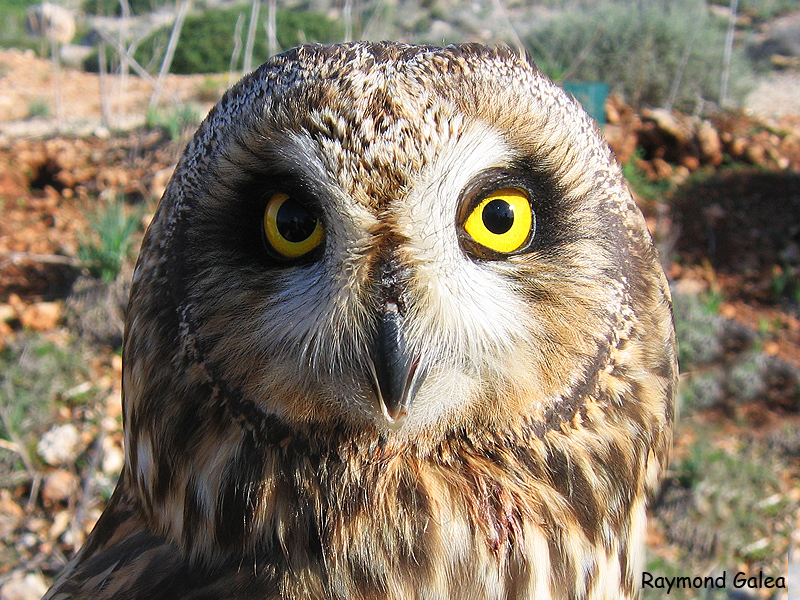 |
Short-eared Owl, Comino, 22nd October 2006 |
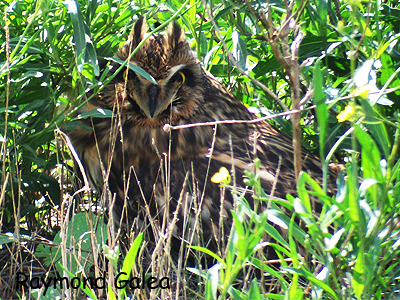 |
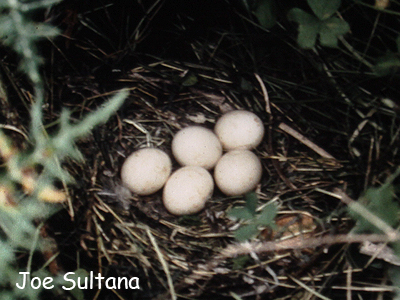 |
| Short-eared Owl, Buskett, 17th October 2006 | Short-eared Owl nest with 5 eggs, Comino, March 1983 |
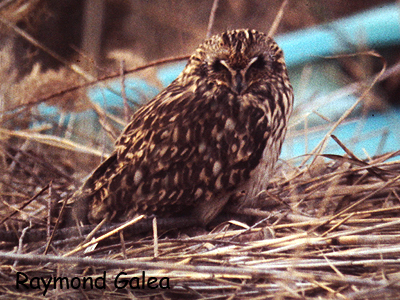 |
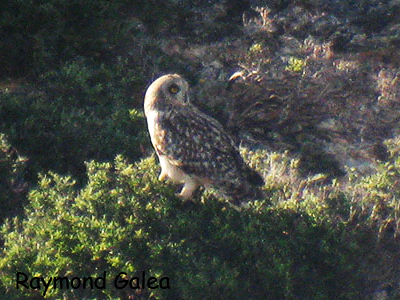 |
| Short-eared Owl, Simar Nature Reserve, 4th January 2002 | Short-eared Owl, Cirkewwa, 21st March 2010 |
Back to Bird Species List